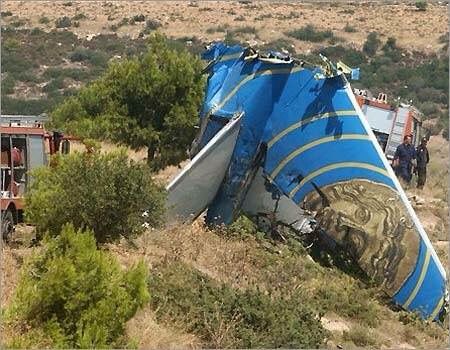Helios Airways Flight 522
By Michael Riddle, 2024-05-31 , Reading time: 1 minute

Crash site of 5B-DBY, taken on the day of the accident. (from FAA).
What happened?
On 15 August 2005, shortly after takeoff, air traffic control lost contact with Helios Airways Flight 522. The flight had crashed, killing all passengers and crew aboard (121 people), becoming the deadliest aviation accident in the history of Greece. Investigation found that the cabin pressurization switch was left in manual after check before takeoff, when it should have been placed back into “auto”. The warning horn for cabin pressurization sounded very similar to another warning horn tied to take-off configuration issues.
Lessons
-
Close similarities in different warning signals led to a failure to identify the proper cabin warning and the incapacitation of the crew due to hypoxia
-
Boeing had been informed of six “air pressure instances” before the Helios crash, but no substantial design changes were implemented prior to the accident.
-
Various Airworthiness Directives over the years were released to address issues related to pressurization, but no directive specifically targeted the confusion around the mode selector switch.
Takeaway
The response to a known design flaw with catastrophic consequences was not adequate to prevent a worst-case scenario from occurring. Mitigating actions taken — such as training, documentation, and checklists — were insufficient to prevent the accident.
References and additional reading
This page is a part of our Safety Minute collection. You can edit it or add more on GitHub.